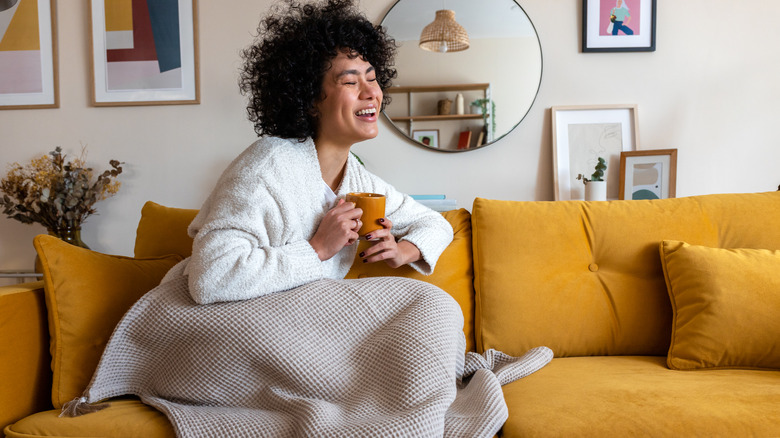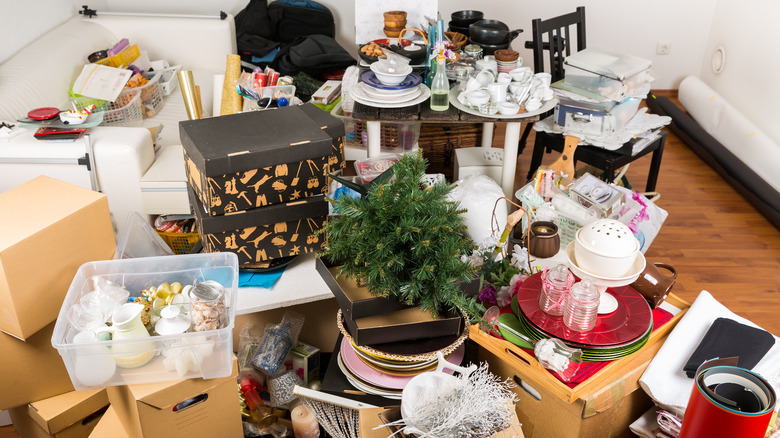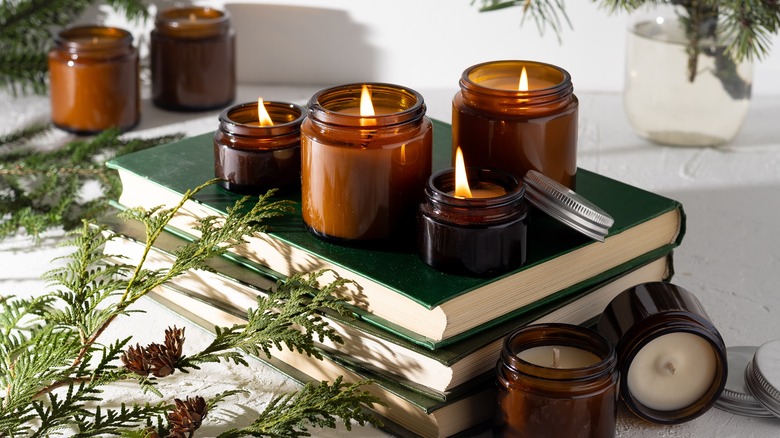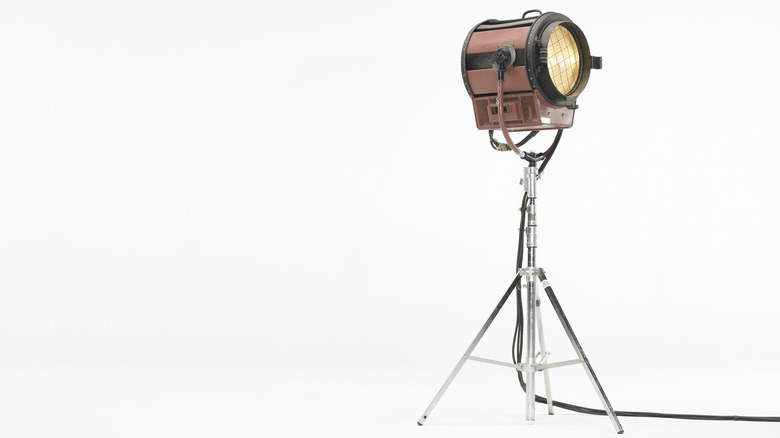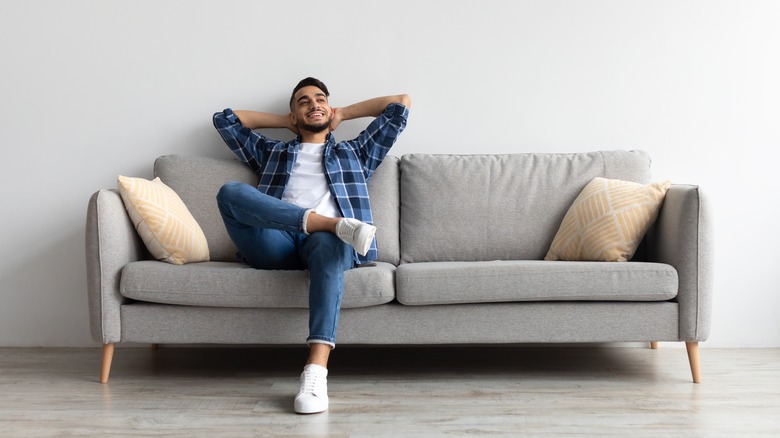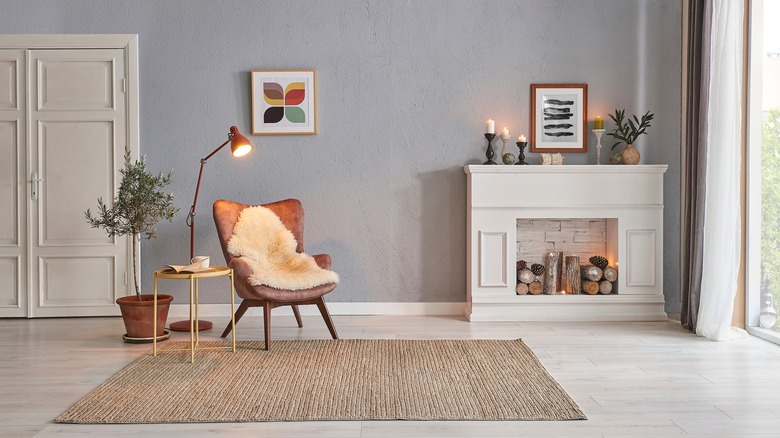A Design Expert Explains How To Decorate Your Living Room For Maximum Relaxation
Psychology Today reports that messy home environments add to the stress that a person feels on a routine basis. However, designing a home that is tailored to relaxation can be a challenging task. Many homeowners seek out increased capacity for relaxation but only find themselves adding more clutter and noise to the space rather than producing a more comforting environment. Whether through mismatched decorative elements or missing a trick when it comes to lighting, there are a number of mistakes that homeowners often make when seeking to amplify the relaxing environment of their homes.
In an exclusive interview with House Digest, Rachel Robarge, the Head of Design at June Homes suggests a few key areas of focus that homeowners should bring to the fore when attempting to boost the comfort level in their property. Robarge notes that clutter and overall decorating style can make for a transformative experience in any home — whether that be a positive one or something less appealing.
Continue reading to learn more of the tips and tactics that Robarge suggests that homeowners can do to tackle a less-than-enticing living room or seating area in the home.
Minimize clutter
According to Robarge, "The fewer items and objects around in your space, the less there is for you to focus on or stress about when trying to relax. Consolidate your items into drawers or cabinets and use baskets or decorative boxes to store items that you need to easily access."
Clutter is often the enemy of a restful mind. Clutter breeds disorganization and can really affect your ability to relax at home in meaningful ways. Clutter can come in many forms, and using storage solutions to reduce the amount of unnecessary clutter in spaces can go a long way to maximizing your relaxation at home.
Robarge notes that "Another way to visually declutter is to put a bunch of smaller objects onto a tray to group them together." Using trays and drawers will help streamline your organizational process and make cleaning up at the end of a long week less of a chore and more of a habit. Similarly, these strategies make finding things that you need on a regular basis far easier.
Add candles or diffusers
Candles make for incredible mood lighting. The use of candles around a bathtub or at the dinner table is well-documented in film and pop culture. This simple addition can dramatically change the comfort level that you experience at home while spending time with the people you care about most. Rachel Robarge notes that "Having the glow of a flickering candle can be incredibly soothing, and having the fragrance of your favorite scent filling the air can be a great way to help you wind down." Indeed, scents play a powerful role in the typical daily grind of nearly everyone. Homesick notes that scents are intimately linked to memories. Therefore, the right kind of smell can make a massive impact on your ability to relax at the end of a tough day.
Robarge continues: "Lavender is a common scent that is known to be relaxing. Candles are also a great décor item to include in your design. If you can't have candles, essential oil diffusers are also a great option." Whether you're looking to tackle mood lighting, smell enhancements, or both — perhaps with scented candles — these mood-building additions can go a long way in your efforts to maximize relaxation and comfort.
Make the right lighting choices
Overhead lighting can also play a negative role in the overall experience of your home. Bright, hospital-esque lighting evokes a sterile, workplace environment that can be hard to sink into when looking for the comforts of a restful and rejuvenating home space. Robarge suggests that homeowners should: "Turn off your harsh overhead lights. There are so many great ways to fill your home with mood lighting that creates an ambiance. When not doing tasks that require overall brightness, use the lamps throughout the space to create a cozy atmosphere."
She continues, "Also, lean away from bright white light bulbs with a bluish tinge. Stick to bulbs that have a kelvin between 2700K and 3000K." Warmer bulbs are a crucial tool for taking control of your home atmosphere. With warm lighting, you can be sure that the house will always exude a sense of relaxation and comfort that simply can't be matched with more biting, white tones that illuminate the room well but cast a more clinical feeling on everything that is touched by the bulb.
Bring in relaxing furniture
"The best way to induce a relaxing feeling in a space is to make it easy to get comfortable," explains Robarge. Relaxing furniture is a must in any space that aims to maximize the homeowner's ability to take a load off at the end of the day. "The shape and function of your furniture are important factors, so always test out yours before purchasing if possible. Also, pick an upholstery that matches your ideal comfort level," continues Robarge.
Furniture should always mirror the lifestyle that you lead. If you have small children or pets that are prone to spills or scratching, a heartier cushion material may be the best way to capture a long-lasting lifespan for your newest furniture additions. Conversely, for those who don't have added damage-creators in their properties, a softer, less durable couch or armchair may fit in perfectly with the added comfort and quality of living that these options bring to bear. Robarge notes that: "Having plush sofas and chairs will make it irresistible to curl up with a good book or have a movie marathon."
Decorate with relaxation in mind
Decoration is the final piece of the puzzle. In order to create a relaxing environment it's important to consider personalizations and decorative choices that will make the place feel like your own. At the same time, it's crucially important to ensure that you don't go overboard with your decorative additions. Decorations can easily turn into clutter if you place too many things throughout the space of your home. A smattering of pictures and collectible items that evoke fond memories is a great idea, and relying on the color wheel to help dominate the decorative theme of this space can make for a more cohesive style.
Robarge notes: "When you're trying to relax, you want to surround yourself with items that help you do so. Fill your space with relaxation-provoking items. In addition to candles, you can have cozy throw blankets, large-leafed plants, or a displayed puzzle or mind game like chess. All these items will add a layer of interest to your space as well."
